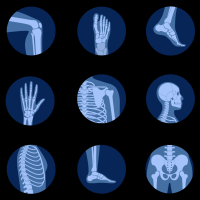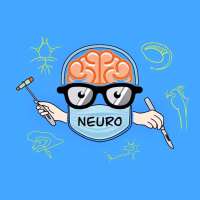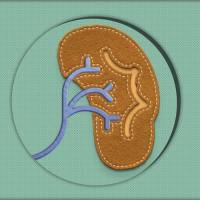【medical-news】Nature reviews:阿尔茨海默病(AD)免疫治疗的启示
Alzheimer disease (AD) is the most common age-related dementia and affects 35.6 million people worldwide; however, no disease-modifying treatments are currently available. Amyloid-β (Aβ) is generated from the cleavage of amyloid precursor protein (APP) and is thought to have a vital role in the pathogenesis of AD. Over the past two decades, therapies have been developed to remove Aβ plaques, inhibit Aβ aggregation and deposition, or reduce the production of Aβ in the brain via inhibition of γ-secretase and β-secretase. All of these strategies, however, have failed in clinical trials.Recently, phase III trials of two monoclonal antibodies against Aβ, bapineuzumab and solanezumab, failed to significantly improve clinical outcomes in patients with mild to moderate AD
‘‘…therapeutic management might be achieved by targeting AD pathogenesis at different disease stages’’
These failures raise important questions regarding the validity of Aβ as a therapeutic target. Neither antibody slowed cognitive or functional decline as assessed with the AD Assessment Scale and the Disability Assessment for Dementia scores. Treatment with bapineuzumab decreased the rate of Aβ deposition, as visualized on PET, and reduced the concentration of phosphorylated tau in cerebrospinal fluid in APOE*ε4 carriers.1 Patients with mild AD treated with solanezumab had marginal but nonsignificant improvements in clinical outcomes;however, serum Aβ concentrations in these patients were significantly increased, suggesting a shift in soluble Aβ from the brain to the periphery.2 Overall, the total Aβ burden was unchanged in patients treated
with solanezumab and bapineuzumab, and the antibodies failed to significantly deplete Aβ plaques. Furthermore, in both trials,one-quarter of the patients classified with mild AD had negative amyloid findings on PET, suggesting that they did not have AD. Thus, the benefits of anti-amyloid therapy might not have been adequately tested in these two trials.
Another concern raised by the results of these trials is whether or not the most appropriate antibodies to remove brain Aβ plaques have ever been used. Bapineuzumab and solanezumab treatment,as shown in these trials, did not result in robust Aβ clearance. Bapineuzumab is a humanized analogue of the murine antibody 3D6, which targets N-terminal Aβand recognizes both soluble and insolubleAβ. In animal experiments, this agent was not effective in removing Aβ plaques owing to saturation of the antibody with soluble Aβ.3 Solanezumab is a humanized analogue of the murine antibody 266, which targets the central domain of Aβ and only recognizes soluble Aβ. The 266 antibody slowed Aβ accumulation in the brain but failed to deplete Aβ plaques in animal studies. Moreover, solanezumab is likely to have impeded the efflux of soluble Aβ from the brain in patients owing to the formation of Aβ–antibody complexes in the brain interstitial fluid and cerebrospinal fluid, as sug- gested from animal studies.4 In this regard, only antibodies with robust evidence of removing Aβ plaques should be used for future immunotherapy trials
The epitope specificity of antibodies against Aβ is crucial to their efficacy, and might be an explanation for the lack of Aβ plaque clearance or cognitive improvement when using middle-region-targeting antibodies such as solanezumab, or antibodies that target the C-terminus of Aβ.The N-terminal region of Aβ is exposed on the surface of Aβ fibrils, whereas the middle and C-terminal regions of Aβ are ‘masked’ in the fibrils.5 N-terminal antibodies, such as bapineuzumab, can recognize both soluble and insoluble Aβ, whereas other anti bodies can only target soluble Aβ. N-terminal targeting antibodies may be more appropriate for the removal of Aβ plaques, and might be used for both prevention and treatment of AD. Conversely, anti-
bodies against the middle and C-terminal regions of Aβ, such as solanezumab,are less effective in plaque clearance and might be more effective in preventing plaque formation.
‘‘…the failures of the phase III trials ... provide valuable lessons for the development of Aβ immunotherapies’’
Any potential immunotherapies for AD raise safety issues and concerns. Amyloid-related imaging abnormalities (ARIA-E) thought to represent vasogenic oedema and sulcal effusions were seen in a dose-dependent manner in patients who received bapineuzumab, but were less frequent in those who received solanezumab. The high incidence of oedema in patients treated with bapineuzumab probably relates to engagement of the antibodies with amyloid plaques in cerebral arterioles.6 ARIA-E might be prevented by prophylactic antibody therapy against Aβ plaque formation,and/or by more-gradual increases in the antibody dose.
Previous clinical trials have suggested that immunotherapy can lead to other adverse effects such as microhaemorrhage and neuro inflammation. In addition, there are safety concerns related to enhanced neuro toxicity secondary to plaque mobilization- associated Aβ oligomerization, antibody- mediated neuroskeletal damage, and autoimmunity due to cross-reactivity of Aβ antibodies with APP at the neuronal membrane.7 In general, these adverse effects are associated with the entry of antibodies against Aβ into the brain. A means to block antibody entry while promoting Aβ efflux by sequestering Aβ in the periphery (peripheral Aβ clearance) might be a safe approach to clear amyloid plaques. A study in mice indicated that increasing the periph-
eral sink of Aβ, combined with enhancement of Aβ degradation via upregulation of low- density lipoprotein receptor-related protein and neprilysin (also known as membrane metallo endopeptidase) in the liver, was associated with reduced levels of brain Aβ.8 Repeated injections of the enzyme neprilysin, however, have failed to attenuate the burden of brain Aβ in animal
models.9 A greater understanding of the underlying mechanisms of peripheral Aβ clearance, which remain largely unknown,might provide important insights for the development of anti-amyloid therapies.
The failures of current and previous trials of immunotherapy suggest that targeting of Aβ alone might not be enough to prevent or slow AD progression, as multiple mechanisms are involved in AD patho genesis and their relative contributions might vary at different stages of the disease.10 The current consensus is that anti-amyloid therapies should be given in the early stage of the disease as a preventative measure. The need exists, however, to develop treatments for patients in late stages of the disease.Successful therapeutic management might be achieved by targeting AD pathogenesis at different disease stages. This approach could entail preventing the production of Aβ, protection of synaptic function and inhibition of tau hyperphosphorylation at the preclinical stage; removal of Aβ plaques, protection of synaptic function and neurons, and attenuation of tau hyperphosphorylation at the mild cognitive impairment stage; and, finally, targeting Aβ accumulation, synaptic dysfunction, tau hyperphosphorylation, neuroinflammation and oxidative stress, as well as providing neuronal protection and cognitive training, at the dementia stage.
In conclusion, the failures of the phase III trials of bapineuzumab and solanezumab provide valuable lessons for the development of Aβ immunotherapies. Use of appropriate antibodies and specific therapeutic targets at different stages of the disease might be a promising way to cure or prevent AD in the future















































